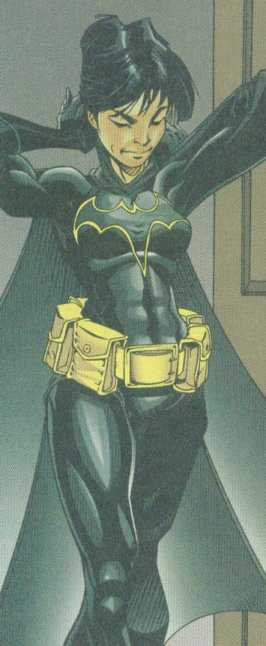Batgirl’s Unresolvable Foundational Conflicts
Last week I started quoting from former DC Comics editor Scott Peterson’s recollection of the creation of the second Batgirl in the late 1990s. At first he was reluctant, but his boss insisted.
Peterson’s original conception of Batgirl having “a complete and total death wish” but being “cheerful and chipper and always up” had to potential to be an Unresolvable Foundational Conflict. As it turned out, Puckett dropped the “cheerful and chipper” part.
Instead, the character he imagined, Cassandra Cain, was totally serious most of the time. She rivaled Tim Drake for being earnest and Bruce Wayne for being unsmiling. Which made the moments when she did smile or laugh or enjoy life all the more surprising and special.
But Puckett did give Cass Cain an Unresolvable Foundational Conflict—at least one. She was ridden with guilt for having been raised as a child assassin, but indefatigable about making up for that. Her upbringing gave her an extraordinary ability to read body language, useful in fights, but she had trouble with spoken language and couldn’t read at all. Physically she was small and slight and of course a girl, but she could beat Batman in hand-to-hand combat.
Cass Cain debuted in the mighty “No Man’s Land” crossover, Dennis O’Neil’s grand exit from the Batman desk. Having taken the mantle of Batgirl but in a new costume, in 2000 she started to appear in her own magazine, scripted by Puckett and drawn in a strikingly idiosyncratic style by Damion Scott. As protagonist of her own serialized story, she went about fighting criminals, and she went about wrestling with her Unresolvable Foundational Conflicts.
COMING UP: And how did that work out?
And then somewhere on the way back to my office I had this crazy vision of a new Batgirl. She was young—late teens, I thought—and Asian, because, well, at the time we had an awful lotta white faces in the DCU, and I thought, if we’re creating a brand new character in the DCU, why on earth would we make her white when other races are under-represented? And in my vision, she was cheerful and chipper and always up and good-natured and she had a complete and total death wish.But the built-in contradiction was, as Peterson probably realized, the point. In serial fiction the best characters are fueled by contradictions. As I’ve written before, they face an Unresolvable Foundational Conflict that provides distinct characterization and an ongoing overall story arc.
This did not seem like a good idea. In fact, it didn’t seem to even make any sense. But it wouldn’t go away.
So I called [writer and former editor] Kelley Puckett. And I said, “Hey, new Batgirl. Young—late teens, I think—and Asian. And cheerful and chipper and always up and good natured and she has a complete and total death wish.”
“But,” he replied reasonably, “that doesn’t even make any sense. . . . That’s completely contradictory.”
Peterson’s original conception of Batgirl having “a complete and total death wish” but being “cheerful and chipper and always up” had to potential to be an Unresolvable Foundational Conflict. As it turned out, Puckett dropped the “cheerful and chipper” part.
Instead, the character he imagined, Cassandra Cain, was totally serious most of the time. She rivaled Tim Drake for being earnest and Bruce Wayne for being unsmiling. Which made the moments when she did smile or laugh or enjoy life all the more surprising and special.
But Puckett did give Cass Cain an Unresolvable Foundational Conflict—at least one. She was ridden with guilt for having been raised as a child assassin, but indefatigable about making up for that. Her upbringing gave her an extraordinary ability to read body language, useful in fights, but she had trouble with spoken language and couldn’t read at all. Physically she was small and slight and of course a girl, but she could beat Batman in hand-to-hand combat.
Cass Cain debuted in the mighty “No Man’s Land” crossover, Dennis O’Neil’s grand exit from the Batman desk. Having taken the mantle of Batgirl but in a new costume, in 2000 she started to appear in her own magazine, scripted by Puckett and drawn in a strikingly idiosyncratic style by Damion Scott. As protagonist of her own serialized story, she went about fighting criminals, and she went about wrestling with her Unresolvable Foundational Conflicts.
COMING UP: And how did that work out?




1 comment:
Enjoying this series of posts, as always.
Post a Comment